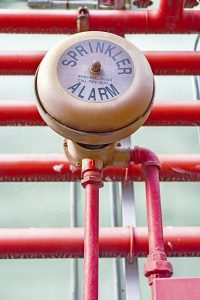
Occupancy classifications are one of the most important categories of building specs that must be examined before fire sprinklers are either installed or upgraded.
Occupancy classifications are one of the most important categories of building specs that must be examined before fire sprinklers are either installed or upgraded. Without keeping this information in mind, it is entirely possible to make a massive mistake that can bring catastrophic outcomes. For instance, the sprinklers might not be powerful enough to contain a fire. Here are some of the occupancy classifications that matter in Maryland and across the country.
Light Fire Hazard
The first classification to be aware of is known as the light hazard. In these spaces, there are not many combustibles that can ignite a fire. Nor are there any fire hazards – or if there are, they are not likely to catch on fire. Buildings that fall into this category include office buildings, churches, school buildings, and healthcare facilities. This does not mean that fire sprinklers can be excluded or deactivated – they are still just as important, even if they are rarely called upon to help put a fire out.
Ordinary Fire Hazard – Group 1
Under this category, the fire sprinklers are still necessary, but there is a slightly higher risk of a fire breaking out. There are more potential combustibles, but the combustibility rating is still low enough not to present too much of a hazard. This category is where you would find places such as laundromats, mechanical plants, light industry, food production, and other types of industry where there isn’t much expectation of a fire endangering anyone.
Ordinary Fire Hazard – Group 2
This is where things start to get more dangerous. There are many more combustibles present, and they are more likely to ignite. Farm buildings such as barns and stables fall into this category, as do breweries and distilleries – places where alcohol is mass-produced. As unlikely as it sounds, libraries and dry cleaners are two other examples of establishments in this group.
Extra Fire Hazard – Group 1
In these spaces, there is a dangerously high number of combustibles present. Unfortunately, there are also highly flammable substances such as dust and lint in the room that can spark a fire. Sawmills, upholstery shops, and sawmills are some of the places that count as part of extra fire hazard group 1.
Extra Fire Hazard – Group 2
Under this classification, a fire hazard is imminent unless something is done about it. Flammable and combustible liquids are all being stored in the same, which is already a risky decision. There needs to be resilient heat-shielding present to prevent a fire.
Fire Protection Services from Fireline
Whether you need smoke detectors, fire extinguishers, or an automatic sprinkler system installed at your commercial property, Fireline has you covered. We have been protecting people and property from fire damage since 1947—and our experience shows in our excellent work! We are known for our superb customer service, our expertise, and our reliability. For more information on how we can help your residential or commercial property, visit us online or give us a call at (800) 553-3405. We are located in Baltimore, MD, with a second office in Leesburg, VA. For more fire safety tips, be sure to follow us on Facebook, Twitter, and LinkedIn.
